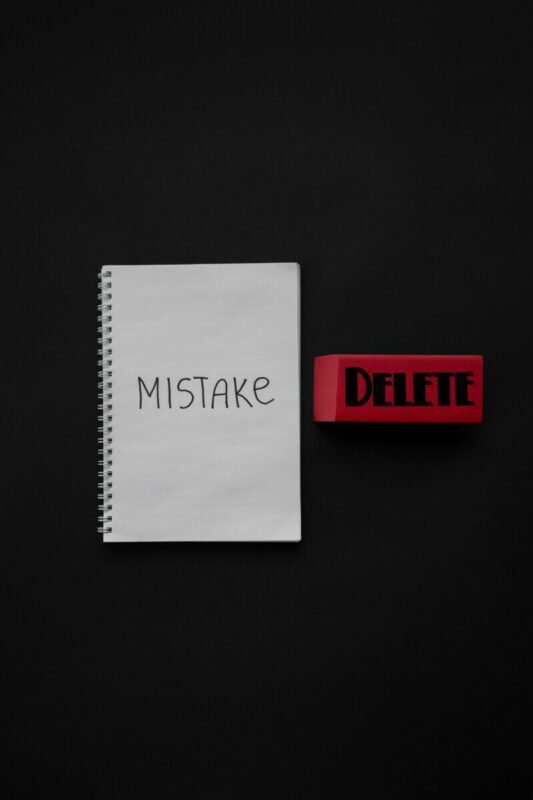As far as conventional wisdom goes, you shouldn’t delete any of your digital artistic work. No matter what. If doesn’t matter how much you suck. If you have a large enough body of work and post it online, you’re likely to earn at least a few dollars as a result of your efforts. In order to build an online presence that earns you a living, you’re going to want to blog a lot. The more blog posts you have, the bigger your digital footprint becomes. If you’ve been blogging for a bit, writing has likely become second nature. But what about curating your content? Maybe you don’t like one of your posts. Or perhaps it doesn’t resonate with you or your brand anymore. Or perhaps people are taking offense to what you’ve written, and you’re wondering whether you should delete it to improve your image. I can’t tell you whether or not you should delete a blog post, but here are some of my thoughts on the subject.
Each article is an asset
Every article you write is a potential source of traffic. The more good articles you have, the more traffic you get. The more traffic you get, the more money you make. You can delete your blog posts, but deleting a blog post is taking away from your main traffic source. This is the main reason why deleting art is considered destructive for those who want to be professionals. You’re destroying your income sources and making it harder for people to reference your work. You can still delete your work every once in a while, but it should be careful and sparing. You shouldn’t have to delete your work all the time.
Don’t cheat yourself!
Whatever number of articles you wanted to have posted, you should keep posted. If you’re cheating yourself on that front, deleting your articles is a terrible move. You’re deleting something that took effort to make. But if you’re deleting articles and rewriting better ones, delete away. Don’t cheat yourself. That’s the number one mistake you can make as a blogger, or any type of business owner for that matter.
RPM matters more than traffic
If you’re going to build a blog for the sake of making money, having a high blog RPM is much more important than having a lot of traffic. Why? Because it takes more time to build traffic than it does to raise your website’s RPM. Imagine you have a blog that’s getting 10,000 visitors per month and earning an RPM of $10 per thousand views. Such a site would make the webmaster about $100 per month, because 10 (thousand views) X $10 = $100. Now if you wanted to double your earnings, you could either add a product to your site which converts 0.1% of the time overall and earns you $10 in profit… or write up to twice as many articles as you’ve already written. I think anyone would agree that putting a few T-shirts or a digital product for sale is far easier than writing 5 articles. Most blogs bringing in 10,000 viewers have far more than 5 articles. It’s way easier to raise your RPM than it is to increase your traffic.
Curation matters
Since RPM matters more than traffic, it’s clear that niche and branding are more important than content creation when it comes to your blog earnings. The niche you choose will determine who your customers are and what you sell, while your blog’s branding. So basically, once you have more than 200 posts, you shouldn’t be afraid to prune and curate your blog tree. You want to have the best website possible. Not just a platform designed to draw in clicks. If you think an article is detracting from your brand, delete it and write another.
Sometimes…we grow with our audiences
If you’re on Twitter, you’ve likely seen an example of a celebrity being roasted for making a racist tweet years ago. Back then, making off color comments online was normal, funny, and had little or no effect on people’s real lives. Now it isn’t. The celebrities might have changed with the times, but their Tweets remained. These are extreme situations, but they apply for bloggers. Posts get out of date. Information about new products comes out. Certain ideas or concepts get proven wrong. The scenarios might cause you to want or need to change. In moments like these, delete content can feel like a step backwards. The solution is just to keep working. You haven’t made any steps backwards and your content curation is progress; you’re building a more refined website. Go on as if nothing has changed and produce a new body of content. If you’re good at what you do and the media landscape hasn’t shifted too much, you’ll be able to pick up where you left off.
Haters are good for you, but be careful who you piss off
Haters bring you attention and money. If you’re engaged in benign activities and attracting haters, good for you. But you don’t want to make people too riled up. If people hate you, they’re going to come after you. It’s easier if you don’t have enemies. Delete anything that you think is going to make you real enemies.
You can always keep old posts in Google drive
If you want to preserve your work, but don’t want it online, delete the file and store it on Google drive. You’re going to find that old posts are sometimes useful. You can edit and repost them later on. Keep your old work if you think deleting your posts might come back to haunt you. If you’re like me, I doubt you’ll use them in the future, but better safe than sorry.
Blogs are a cool business. You have a bunch of search-based content that fills the web. Each piece of content functions as a little asset, bringing you money. At the same time however, blogging is an art, not a science. Coming up with articles, writing them, and connecting them to your overall brand is a creative pursuit, not a quantitative one. Sometimes, deleting blog posts is going to come to mind. Be careful in your consideration, save your old work, but don’t be afraid to get rid excess writing.
Thanks for paying attention.


